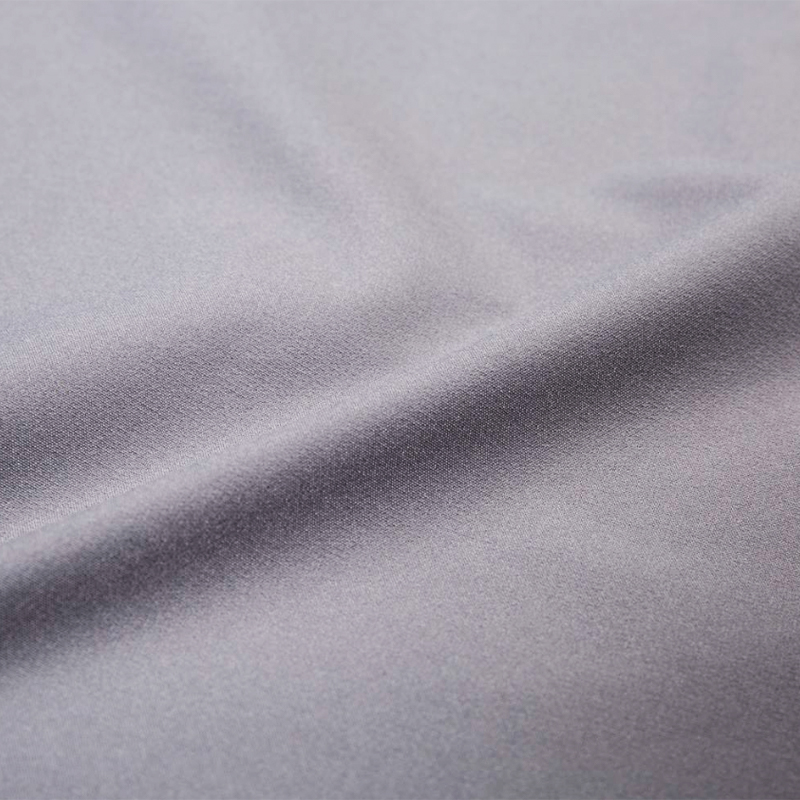Controlling static electricity accumulation in mountain climbing fabrics is crucial for ensuring comfort and safety. Static electricity can cause discomfort, attract dirt and dust, and even pose a risk of sparks in flammable environments. Here are some methods to mitigate and control static electricity accumulation:
Use of Anti-Static Fibers and Materials
Incorporating Conductive Fibers: Blending fibers such as carbon, stainless steel, or other conductive materials into the fabric can help dissipate static charges. These fibers conduct electricity away from the surface, reducing the accumulation of static charges.
Adding Anti-Static Coatings: Applying coatings that contain conductive polymers or carbon-based compounds can also help in dissipating static charges. These coatings provide a pathway for the charges to be conducted away from the fabric surface.
Fabric Blends and Treatments
Using Hydrophilic Materials: Fabrics that absorb a small amount of moisture from the air, such as those blended with natural fibers like cotton or wool, can help reduce static accumulation. Moisture increases the conductivity of the fabric, allowing charges to dissipate more quickly.
Surface Treatments: Applying anti-static finishes or treatments to the fabric surface can reduce static build-up. These treatments often involve the use of surfactants or other chemicals that increase the conductivity of the fabric or reduce friction.
Environmental Control
Maintaining Humidity: Higher humidity levels in the environment can help dissipate static charges as moisture in the air provides a conductive path. Using humidifiers or maintaining a higher relative humidity in storage areas can reduce static electricity accumulation on fabrics.
Temperature Regulation: Keeping temperatures moderate can help maintain a consistent moisture level in the fabric, reducing the potential for static build-up.
Anti-Static Chemical Additives
Integrating Anti-Static Agents: Anti-static agents, such as quaternary ammonium salts or conductive polymers, can be added during the manufacturing process or applied as a finish. These agents reduce surface resistance, allowing static charges to dissipate more easily.
Ionizing Air Blowers: These devices generate ions that neutralize static charges on fabric surfaces. They are particularly useful in manufacturing and storage environments where static control is critical.

Fabric Construction and Weaving Techniques
Choosing Appropriate Weaves: Weaving techniques that reduce friction between fibers can help minimize static electricity accumulation. Tighter weaves with less surface roughness are less likely to generate static charges compared to loose or highly textured fabrics.
Multi-Layer Fabrics: Using layered fabric constructions with an inner layer designed to dissipate static charges can help. For example, an outer layer may provide the primary weather protection, while an inner conductive layer manages static build-up.
Wearing Conductive Garments
Layering with Conductive Undergarments: Wearing conductive base layers or undergarments can help dissipate static charges before they reach the outer fabric layer. These undergarments are designed to provide a low-resistance path for static charges to be neutralized.
Grounding and Static Control Devices
Using Grounding Straps and Mats: In environments where static control is critical, grounding straps or mats can be used to provide a direct path to ground, dissipating static charges. These can be especially useful in indoor settings or when handling sensitive electronic equipment.
Static Control Wristbands: When working in areas where static build-up is a concern, wearing a static control wristband can help maintain a connection to a grounding source, reducing the risk of static accumulation.
Regular Maintenance and Cleaning
Frequent Washing: Washing fabrics regularly can help reduce static build-up by removing dirt, oils, and other contaminants that can increase friction and static charges. Using anti-static laundry products can further enhance this effect.
Proper Storage: Storing mountain climbing fabrics in environments with controlled humidity and away from sources of static electricity (e.g., synthetic carpeting) can help prevent static accumulation.
Controlling static electricity in mountain climbing fabrics involves a combination of material selection, fabric treatments, environmental management, and practical use of anti-static devices. By implementing these strategies, manufacturers and users can reduce the discomfort and risks associated with static electricity, enhancing the overall performance and safety of mountain climbing gear.
.jpg?imageView2/2/format/jp2)
.jpg?imageView2/2/format/jp2)



.jpg?imageView2/2/format/jp2)





